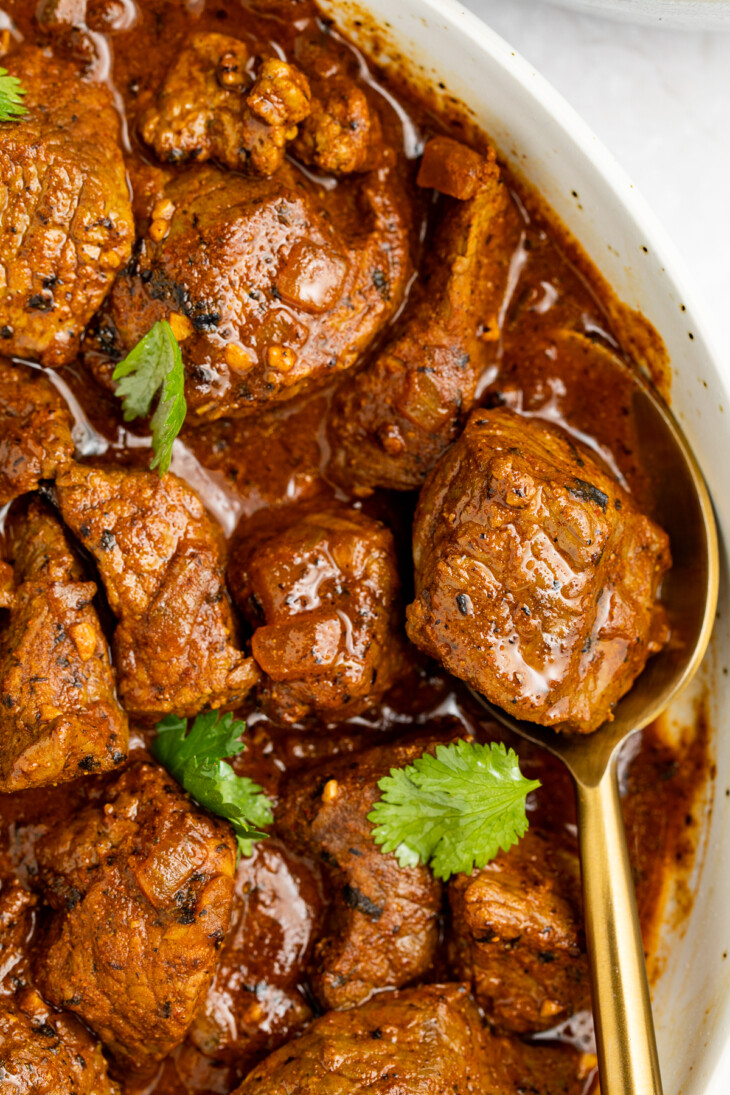Traditionally a Goan recipe, beef vindaloo can be traced back to Portuguese explorers of the early 1400s. The Portuguese would preserve meats in a marinade of vinegar, wine, garlic, and salt, to ensure the meats would keep for their travels.
Fast forward 400 or so years, and you have Goan cooks preparing vindaloo for the British imperialists colonizing India. Beef, pork, and duck vindaloo (or “vindalho”) can even be found in a British-Indian cookbook dating back to 1888.
The colonizers took the recipe with them through other parts of the world, though it didn’t really surge in popularity across Britain until the late 1900s. Of course, the recipe’s been adapted and transformed so much over time and across regions that what we typically think of as vindaloo today differs quite a bit from the original Goan/Portuguese dish. Our recipe below is more in line with the British take on beef vindaloo than the authentic Goan rendition.
Chef’s Tips
Vindaloo can be made with a variety of proteins. You’ll commonly find it with beef, pork, lamb, or chicken. This beef version is my personal favorite, but feel free to swap in a different type of meat if you’d rather. Keep in mind that a protein like chicken won’t need to cook as long as the beef chuck we used here.
To save yourself a little prep time, you can purchase pre-chopped beef chuck. You might find it at your grocery store as “stew meat”. Whether you buy it already chopped or you chop the beef chuck yourself, make sure the pieces are fairly even in size so they cook at the same speed.
When you’re cooking the diced onion, don’t rush things. Cooking them until they’ve caramelized brings out SO much flavor and really makes a difference in the sauce. If you notice the onions start to burn, add 1-2 tablespoons of water to slow the process.
I mentioned before you can skip the cayenne entirely if you’re cooking for someone with a low spice tolerance. You can also serve your beef vindaloo with a dollop or two of plain Greek yogurt. It’ll help cut through the heat, and it adds a really nice creaminess to the dish. I also recommend serving it with a side of basmati rice and some warm naan, too.
Continue Reading in next page
ADVERTISEMENT
